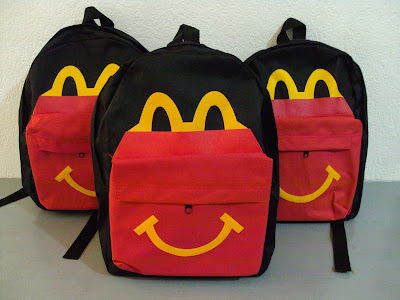EcoWaste Coalition Finds Lead and Other Toxic Chemicals in 100 Souvenir Products
Souvenir products that local and foreign tourists get from gift stores as a token of remembrance of their visit may pose health or safety risk.
Thus, declared the EcoWaste Coalition, an environmental watchdog promoting zero waste and chemical safety, after finding 100 out of 127 popular souvenir items sold in Baguio, Cebu, Davao and Manila Cities laden with toxic chemicals, including lead, a developmental and reproductive toxin.
“Lead in souvenir products, which can be traced from the use of lead-containing paint, represents a health hazard,” said Thony Dizon, Coordinator of the EcoWaste Coalition’s Project Protect.
Considered by the World Health Organization as one of the “ten chemicals of major public health concern,” lead and its compounds can cause irreversible brain and nervous system damage, reduced intelligence, learning disabilities and behavioral problems.
“While not necessarily made and marketed for kids, these colorful and petite keepsakes could end up with children who love to explore and play with things,” he said.
“Lead is released as toxic dust as the product ages and then swallowed by children through their casual hand-to-mouth behavior, damaging their health even at very low doses,” he added.
The group’s latest probe on chemicals in souvenir products was spurred by its discovery of hazardous levels of lead in toy ukuleles, which are among Cebu’s iconic souvenirs.
Since no government agency seemed to be looking into the presence of hazardous substances in souvenir items, the EcoWaste Coalition widened its investigation to include other affordable memento sold to tourists.
From July 22 to 31, the group bought a total of 127 souvenir articles from gift stores catering to tourists in the cities of Baguio (25 samples), Cebu (34 samples), Davao (43 samples) and Manila (25 samples), and had them analyzed for heavy metals.
Measurements were performed using a portable X-Ray Fluorescence (XRF) spectrometer, a device routinely used for metals detection in consumer products and other media.
The samples include souvenir ballpens, cellphone trinkets, coin purses, fridge magnets, key chains, pen or pencil holders, shot glasses, toy ukuleles and wall decors sold for P7.50 to P180 each.
The EcoWaste Coalition’s investigation showed that:
a. 100 of the 127 samples (79%) contain one or more toxic metals such as antimony, arsenic, cadmium, chromium, lead and mercury above levels of concern.
b. 27 samples had low or non-detectable levels of lead and other harmful chemicals, indicating the availability of non-toxic souvenirs.
c. 93 samples had lead above the US limit of 90 parts per million (ppm) for lead in paints and surface coatings.
d. None of the samples had information about their chemical ingredients, and none provided any precautionary warnings.
e. None of the samples had complete product labels.
Among the souvenir items with the highest concentrations of lead per product category were:
1. “Fiesta Kadayawan” shot glass bought in Davao City for P39 with 36,900 ppm of lead.
2. “Weapons of Moroland” wall decor bought in Manila for P65 with 16,800 ppm of
lead.
3. Toy ukulele bought in Cebu City for P 220 with 13,900 ppm of lead.
3. Toy ukulele bought in Cebu City for P 220 with 13,900 ppm of lead.
4. Jeepney design fridge magnet bought in Manila for P23 with 9,521 ppm of
lead.
5. Pen holder bought in Baguio City for P70 with 5,571 ppm of lead.
6. Pencil design key chain bought in Baguio City for P30 with 4,982 ppm of lead.
5. Pen holder bought in Baguio City for P70 with 5,571 ppm of lead.
6. Pencil design key chain bought in Baguio City for P30 with 4,982 ppm of lead.
Given the
above results, the EcoWaste Coalition appealed to souvenir makers to switch to
unleaded paint for creative crafts that tourists can safely bring home, as well
as to properly label their products to help consumers make informed decisions.
The group further urged the government to prohibit the use of lead and other toxic metals in souvenir products, and to conduct a public information drive about the risks posed by harmful chemicals in souvenirs and the benefits of transitioning to non-toxic materials.
The group further urged the government to prohibit the use of lead and other toxic metals in souvenir products, and to conduct a public information drive about the risks posed by harmful chemicals in souvenirs and the benefits of transitioning to non-toxic materials.
-end-
Additional Information on Toxic Souvenirs per City:
Based on sampling results:
1. Baguio: out of 25 samples, 14 were found to be toxic (or having lead and other toxic chemicals above levels of concern).
2. Cebu: out of 34 samples, 30 were toxic.
3. Davao: out of 43 samples, 39 were toxic.
4. Manila: out of 25 samples, 17 were toxic.
Based on sampling results:
1. Baguio: out of 25 samples, 14 were found to be toxic (or having lead and other toxic chemicals above levels of concern).
2. Cebu: out of 34 samples, 30 were toxic.
3. Davao: out of 43 samples, 39 were toxic.
4. Manila: out of 25 samples, 17 were toxic.







Comments